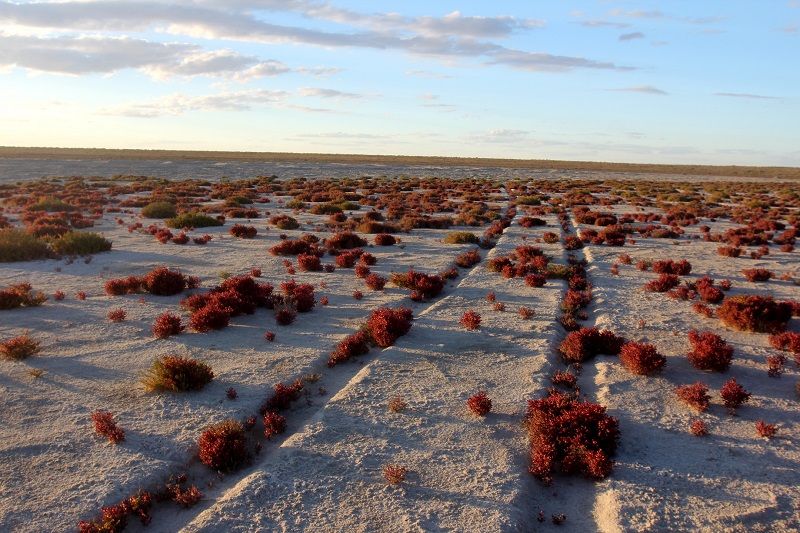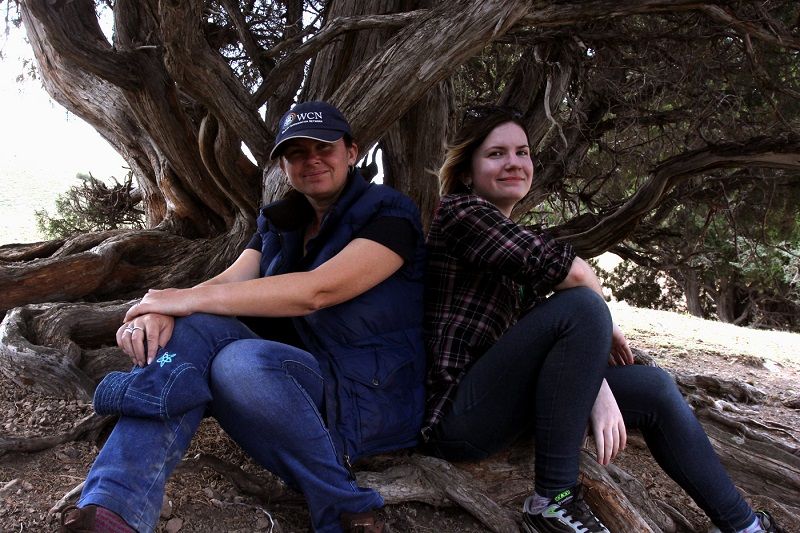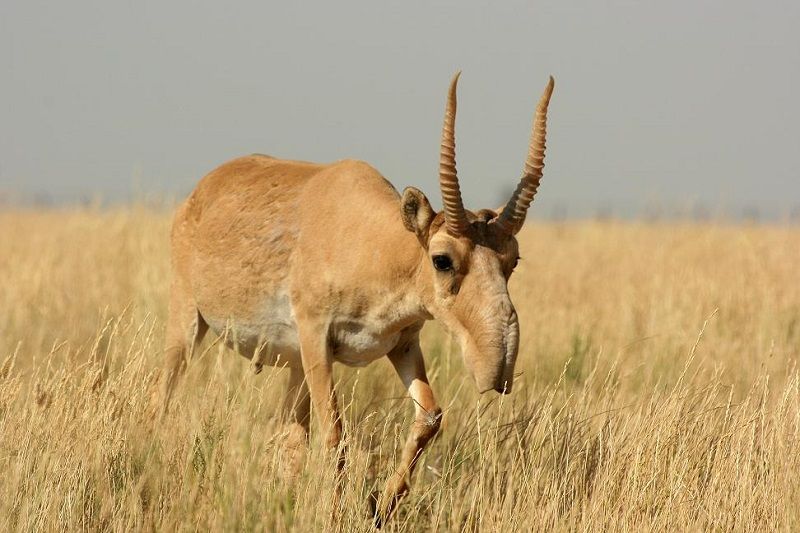The Aral Sea in Central Asia is synonymous with ecological and socio-economic collapse. At the centre of this region lies, what until the sea largely vanished, used to be an island: Vozrozhdenie (meaning ‘Resurrection’). This remote island has been home to critically endangered saiga antelope for at least 400 years. Until recently, the unique biodiversity of Resurrection Island has been well-preserved, not least due to its inaccessible location and because it was, for a long time, a closed-off military zone. Now, with the sea all but gone, the wider area suffers from immense environmental challenges and the wildlife that found refuge there are exposed to outside threats.

How many saiga are there?
Saiga Conservation Alliance (SCA) founder, Elena Bykova, supported by her daughter Olya Esipova, is studying the Resurrection Island population properly for the first time to better understand how many saiga are there, which areas they use and how to best avoid causing negative impacts on them or their environment.
But there are many challenges. The primary monitoring method involves carrying out transect surveys in vehicles and collecting records of where the saiga herds are found, as well as examining droppings and even dead animals. But because the island is composed of unstable clay soils, there are few suitable roads for driving on. Remote camera traps are also used, but these have their drawbacks too.

’Saigas are very shy animals dispersed around a massive land area, and it’s only a small population we are monitoring, so it’s actually very difficult to collect good photographic records,’ Elena explains. An alternative that may become possible in the future is to use satellite imagery which could be used to identify where animals are concentrated.
’Once we know more about the saiga groups on and around Resurrection Island, we will be able to use this data to design a new biosphere reserve in the region,’ Elena adds. ‘Having a new protected area will make a big difference for the remaining resident saiga group and for other endangered species found there.’
Helping people to help saiga
Elena and Olya believe that the Aral Sea area, and the saigas and other wildlife that live there, have huge tourism potential and could provide a sustainable source of income for local people. Residents of Muynak are in dire need of something – it was once a thriving port on the Aral Sea but is now 150km from what is left of it.

The region has many potential attractions. As well as saigas and other wildlife, it has a rich historical and cultural legacy, with civilisations connected to Zoroastrianism (an Iranian religion) in the region of Khorezm – close to the border with Turkmenistan – dating back some 2,000 years.
That said, there’s much that needs to be done to make it suitable for tourism. There’s currently very little in the way of tourist infrastructure, says Elena, which is why the SCA (with the support of the Uzbekistan government and some international partners) is going to develop pilot tours, train guides and create viable homestays in Muynak and some areas on Resurrection Island itself. By making the area safer to visit for tourists, it will in-turn mean that local people, as well as saiga antelope and other wildlife, can also benefit.
Thank you for helping us fund this research to protect saiga antelope in Uzbekistan.
If you’d like to support this work, please donate or set up a direct debit here today:
